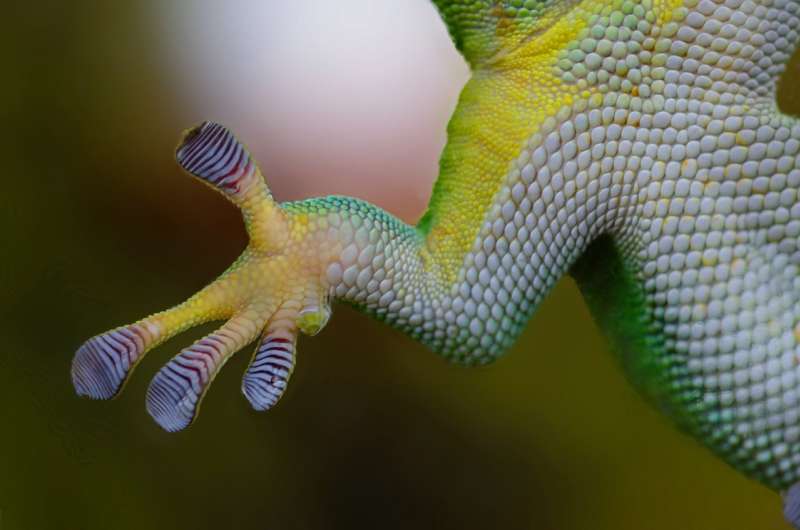Study finds evidence that leopard geckos can make new brain cells

University of Guelph researchers have discovered the type of stem cell allowing geckos to create new brain cells, providing evidence that the lizards may also be able to regenerate parts of the brain after injury.
This finding could help in replacing human brain cells lost or damaged due to injury, aging or disease.
"The brain is a complex organ and there are so few good treatments for brain injury, so this is a very exciting area of research," said Prof. Matthew Vickaryous in the Department of Biomedical Sciences at the Ontario Veterinary College (OVC).
"The findings indicate that gecko brains are constantly renewing brain cells, something that humans are notoriously bad at doing," he said.
Published in Scientific Reports, this study is the first to provide evidence of new neuron formation—and the presence of stem cells—in the leopard gecko brain.
"Most regeneration research has looked at zebrafish or salamanders. Our work uses lizards, which are more closely related to mammals than either fish or amphibians," said Rebecca McDonald, a master's student who led the study.
The researchers identified stem cells that regularly produce new brain cells in the medial cortex, an area in the front of the brain that is responsible for social cognition and behaviour. It is also a part of the lizard's brain that has a well-studied counterpart in the human brain—the hippocampus.
To track cells in the geckos' brains, researchers injected the lizards with a chemical label that gets incorporated into the DNA of newly formed cells. Looking at the labelled cells over time, researchers saw where they first appeared, where they migrated to and what types of cells they ultimately became.
McDonald says she was surprised to see just how many stem cells the gecko brain contains and how quickly new brain cells are produced.
Last year, Vickaryous published a study that for the first time identified cells in geckos that enable them to regrow their spinal cords when regenerating their tails.
"The next step in this area of research is to determine why some species, like geckos, can replace brain cells while other species, like humans, cannot," said McDonald.
Entering OVC's veterinary medicine program this year, she hopes to continue studying wound healing.
"Recently, there's been a lot of new information coming out about the brain's ability to produce new cells, something that was long thought to be impossible," she said.
"This is definitely an area of research that has the potential to change the way we treat brain injuries."
More information: Rebecca P. McDonald et al, Evidence for neurogenesis in the medial cortex of the leopard gecko, Eublepharis macularius, Scientific Reports (2018). DOI: 10.1038/s41598-018-27880-6




















